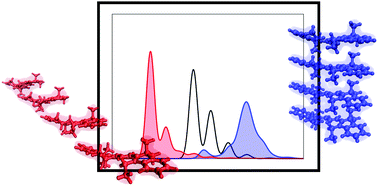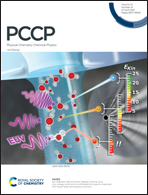Aggregates of polar dyes: beyond the exciton model†
Abstract
The physics of aggregates of polar and polarizable donor–acceptor dyes is discussed, extending a previous model to account for the coupling of electronic and vibrational degrees of freedom. Fully exploiting translational symmetry, exact absorption and fluorescence spectra are calculated for aggregates with up to 6 molecules. A two-step procedure is presented: in the first step, a mean-field solution of the problem is proposed to define the excitonic basis via a rotation of the electronic basis. The rotation is also accompanied by a Lang–Firsov transformation of the vibrational basis. In the second step, the aggregate Hamiltonian, written on the exciton basis, is diagonalized towards exact results. The procedure leads to a reduction of the dimension of the problem, since, at least for weak coupling, only states with up to 3 excitons are needed to obtain reliable results. More interestingly, the mean-field solution represents the proper reference state to discuss excitonic and ultraexcitonic effects. The emerging picture demonstrates that the exciton model offers a reliable description of aggregates of polar and polarizable dyes in the weak coupling regime, while ultraexcitonic effects are important in the medium-strong coupling regimes, and particularly so for J-aggregates where ultraexcitonic effects show up most clearly with multistability and multiexciton generation.



 Please wait while we load your content...
Please wait while we load your content...